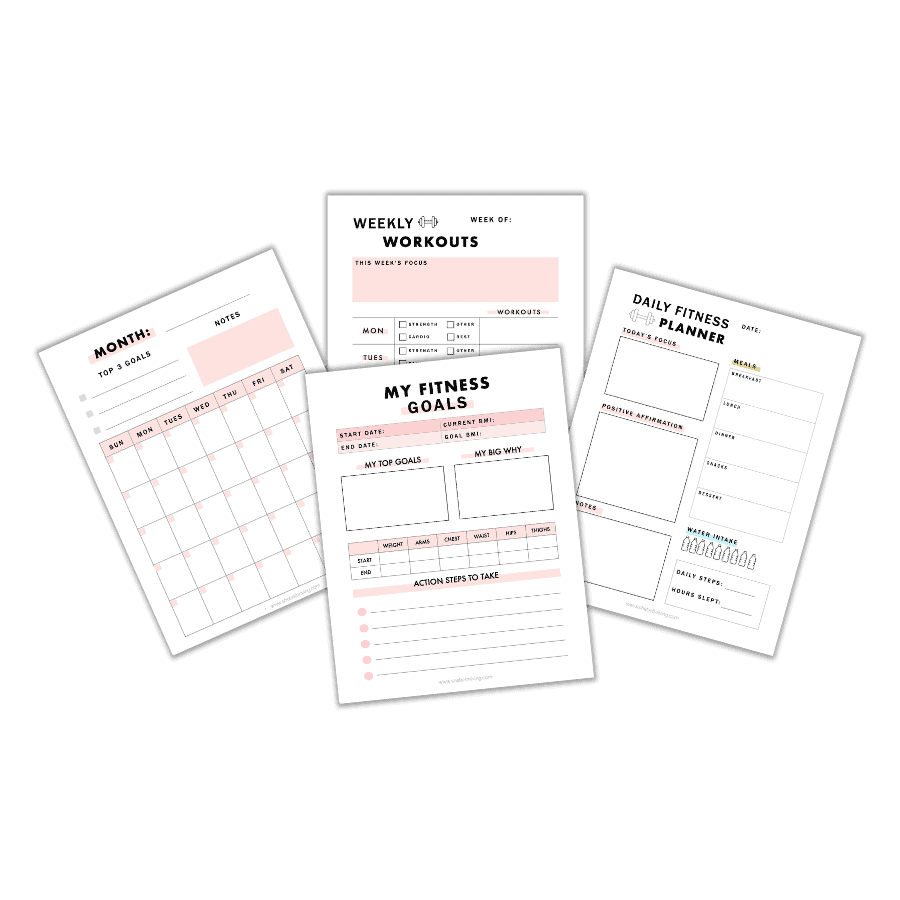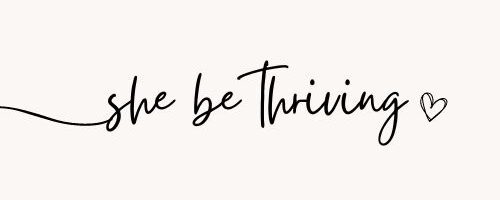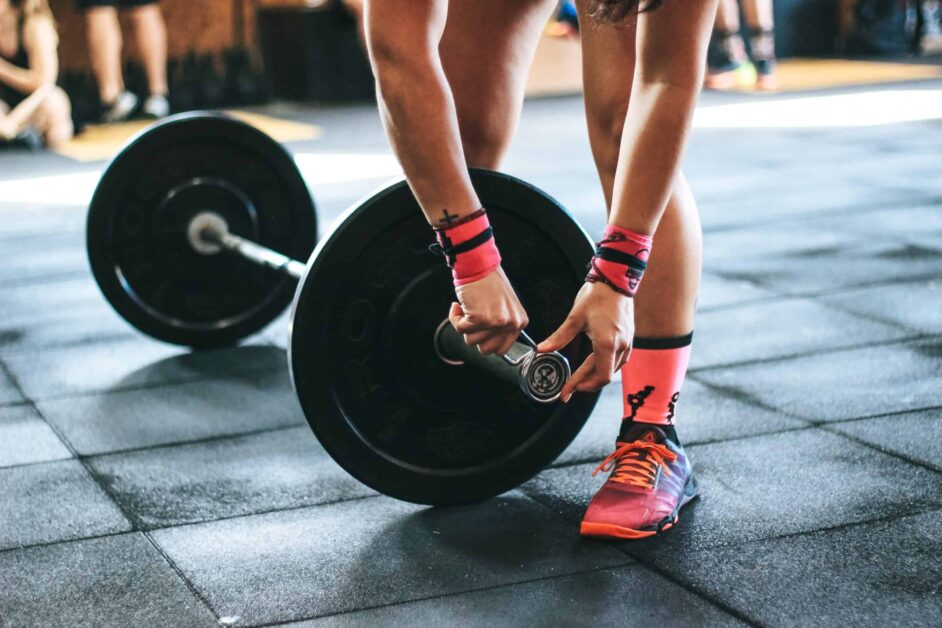How To Set Fitness Goals For Beginners + FREE Fitness Planner
Disclosure: This post contains affiliate links, which means I receive a small
commission, at no extra cost to you, if you make a purchase using this link.
Please see my disclosure for more details.
Want to start your fitness journey, but you’re not sure how or even where to begin? This post will show you the most helpful tips to set fitness goals for beginners!

Fun fact, I’m a gym nerd . But I wasn’t always this way. In fact, three years ago, I didn’t even know what a deadlift was or what a pull-up looked like. I started my fitness journey as a beginner, just like everybody else.
A huge reason I didn’t start my gym fitness journey was because I struggled with major gym anxiety, so I was terrified to even set foot into the gym. But I pushed myself to keep going, which increased my confidence, which made me realize that the more I faced my fears, the smaller they became.
Facing my gym anxiety was my first fitness goal when I started my journey. It was more of a mental challenge, but it was probably the most important one to me, at the time, since I really wanted to overcome this fear.
Once I overcame that fear, I learned how to set fitness goals. When I started my gym journey as a beginner, I set a goal for myself to do 5 unmodified pushups in a row (I’m aiming for 25 now). I set a goal to bench press using 10 lbs dumbbells and now, I want to aim for 25 lbs dumbbells.
I’ll probably create future posts about my personal fitness goals if that’s something that would interest you. Let me know in the comments if you want me to share them with you!
Because setting fitness goals was a crucial part of starting my journey, I’m going to be sharing my best tips to set fitness goals if you’re a beginner!
This post is all about setting fitness goals for beginners.

What is a fitness goal? (examples included)
A fitness goal is a specific mental and physical challenge that you want to focus on. A SMART fitness goal will challenge you physically in a realistic and achievable time frame. It’s important to note that everyone’s fitness goal will look different. A person might want to train for a 5k marathon, while another person may want to build strength at the gym.
If you’ve tried achieving fitness goals in the past, but to no success, then maybe it’s time to look at how you actually set your goals. Are they realistic, time-based, yet challenging?
I’ll show you examples of common fitness goals that are too vague and not SMART:
- I want to gain muscle.
- My goal is to get abs.
- My goal is to run 1 mile.
- I want to grow my back muscles.
These are really vague goals that have no sense of direction and clarity.
You want to make sure your goals are very specific that you know exactly what you’re trying to achieve in a time-based frame.
Here are some examples of what SMART fitness goals could look like:
- In 6 weeks, my goal is to do 5 unmodified push-ups.
- In 3 months, my goal is to go from 20 lbs to 30 lbs for shoulder presses.
- In 5 months, my goal is to do 1 unassisted pull-up.
- In 5 months, my goal is to run 3 miles without taking any breaks.
As you can see, these are very specific goals. You know exactly where you want to be given a specific amount of time. Later in this post, I’ll teach you how you can break down your goals into practical action steps.

Why is creating fitness goals important?
Before we get into how to get started, you need to understand why it’s important to have fitness goals.
I want to be clear, thought, that there is nothing wrong with working out for the sake of working out. You might just enjoy going to get a workout in to feel mentally and physically good, which is awesome!
On the other hand, based on the title of this post, I highly recommend setting fitness goals if you are trying to get serious about gyming as a beginner.
When you set fitness goals for yourself, you will have more direction, focus, and drive to keep going on your fitness journey.
Personally, having 2-3 fitness goals helps me to have clarity about what I specifically want to do at the gym. I go to the gym 5-6 times a week knowing what muscle groups I’m going to hit and what workouts to do.
In a future post, I’d love to share more about my fitness journey and how I went from being terrified of touching gym equipment to being a gym nerd (lol).
With that said, I would highly recommend setting 2-3 fitness goals and I’ll show you how to get started with them, so keep on reading!

Get the FREE FITNESS PLANNER!
My 5 Best Tips: How to set fitness goals
Let’s get into the good stuff. Now that you know what a SMART fitness goal looks like and why it’s important to set a goal, I’m going to share with you 5 effective tips that will help drive you to plan your fitness goals.
1. Be specific about your long-term goal(s)
Just like any other goal, it’s important to work backwards starting with your long-term fitness goal. Long-term fitness goals typically take about 6-12 months or more to accomplish.
Long-term goals are more vague and less specific. Think of your long-term fitness goals as a destination of where you want to be in 6-12 months.
If you don’t know where to start, here are some questions to help get you thinking:
- Where would you like to be in 6-12 months in terms of your fitness goal?
- What would you like to improve about your fitness?
- How would you classify your fitness level: beginner, intermediate, or advanced?
- Who inspires you to work towards your fitness goal and why?
When you ask yourself these questions, you also want to have a strong WHY that will be the backbone to keep going during your fitness journey.
Why do you want this particular goal? Here are some examples of long-term fitness gym goals:
- I want to compete in an Ironman competition.
- I want to lose 30 pounds in 8 months.
- I want to lower my cholesterol levels by the end of the year (this is a personal goal of mine lol).
- I want to participate in a 10k running marathon.
- I want to go to the gym 4x a week and make it a regular part of my weekly routine.
These long-term goal examples are not really specific, but they give clarity, focus and direction.
Once you know your long-term goal(s), creating your short-term goals will be a lot easier.
I know this is a lot and you may or may not be overwhelmed with wanting to set a lot of fitness goals. If that’s the case, I want to encourage you to take your fitness goals one-by-one.
You don’t want to set yourself up for failure before starting. That’s why I want you to start small by having 1-2 long-term goal(s) and no more than that.
2. Know your short-term goal(s)
When you have a long-term goal in mind, we can jump into creating short-term goals.
I would recommend creating no more than 1-2 short-term goals that move you toward your long-term goal.
Short-term goals are so important because they provide you with the opportunity to evaluate your progress and accomplishments over time.
Short-term goals typically range from 6-12 weeks.
Here are 2 important questions to ask yourself when setting short-term goals:
- What action steps do I have to take to reach my long-term goal?
This question will help you to brainstorm all the possible action steps you could take to meet your long-term goal. These action steps will become a short-term goal, which will l then be broken down into weekly/daily goals (also called immediate fitness goals).
- What mental/physical obstacles might I face and what can I do to handle them?
It’s also important to evaluate what mental/physical obstacles you might come across when setting your short-term goals. For example, if you aren’t really familiar with how to use certain gym equipment, it would be helpful to take note of that and create an action plan. You could watch gym equipment tutorials or go to the gym at a less busy hour to familiarize yourself with the equipment there.
I’ll show you a few SMART short-term goal examples so that you have a better idea of how to create your own:
- Long-term goal: I want to do 10 unmodified pushups in a row in 6 months.
- Short-term goal: I want to do 1 unmodified pushup in 2 weeks.
- Short-term goal: I want to do 5 unmodified pushups in 3 months.
- Long-term goal: I want to do 3 reps of bench press with 50 lb dumbbells in 8 months.
- Short-term goal: I want to do 6 reps of bench press with 30 lbs dumbbells in 3 months.
- Short-term goal: I want to do 5 reps of bench press with 40 lbs dumbbells in 6 months.
Now that you can kind of see the breakdown of a long-term goal into short-term goals, it’s your turn to brainstorm 1-2 short-term goals!
And please know that you can always adjust your short-term goals to meet your fitness needs!
3. Break down your short-term goal into immediate fitness goals
Immediate fitness goals are goals that you can start doing now, tomorrow, or next week. These are basically your action steps that will move you towards your short-term goals.
Here’s how the planning process looks like when we’ve laid them out:
Long-term goal → 1-2 short term goal(s) → immediate fitness goals (action steps)
So using the examples from above, I’m going to break down the short-term goals into immediate fitness goals to show you what they look like:
- Long-term goal: I want to do 10 unmodified pushups in a row in 6 months.
- Short-term goal: I want to do 1 unmodified pushup in 2 weeks.
- Immediate goal: Do 3 sets of 12 reps of your modification of choice, 3 times a week for 2 weeks
- Long-term goal: I want to do 1 set of 3 reps of bench press with 50 lbs dumbbells in 8 months.
- Short-term goal: I want to do 2 sets of 6 reps of bench press with 30 lbs dumbbells in 3 months.
- Immediate goal: Do 3 sets of 12 reps of bench press with 15 lbs dumbbells, two times this week.
4. Schedule in your workouts
Hopefully, up until this point, you have more confidence in setting your own fitness goals! You can do it. Once you’ve created your long-term, short-term, and immediate fitness goals, you’re not done yet.
As much as I want to say you’ve successfully set your fitness goals, what’s planning without actually taking action? And the best way to take action towards your goal is scheduling your workouts into your calendar!
Whether it’s Google calendar or a physical fitness planner, schedule in what you plan to do that day. You can either write down specifically what your workout plan is for Monday or you can just block out time to work out on Monday.
Don’t skip this step! The more you keep yourself accountable, the more motivated you will be to meet your goals!
5. Track your progress
In order to know if you’re progressing or meeting your goals, you want to keep track of your daily/weekly/monthly progress. I would highly recommend investing in a fitness tracker that allows you to record, track, and review your goals.
If you don’t know where to start, here a few of my favorite fitness tracker planners:
Workout Log Gym Planner
Life and Apples Wellness Planner
Clever Fox Wellness Planner
Tamara’s Daily Fitness Planner for Women
Tips for success in reaching your fitness goals
1. Check-in with your fitness goals. A great way to do that is scheduling in monthly check-ins with yourself either by using a calendar or planner. That way, you can see where you’re improving and other areas that you would want to improve more on.
2. Remember that discipline always trumps motivation! When I started my fitness journey, I was relying way too much on motivation and how I felt in order to workout. So on the days I didn’t feel like working out, I didn’t. On the days when I had no energy and felt lazy, I didn’t bother to go to the gym.
Let me tell you now that there will be many days along your fitness journey when you won’t want to workout or drive to the gym or take care of your body.
The best way to overcome these no-motivation days is to practice self-discipline.
Push yourself to go to the gym even when you don’t want to. Learn to just do it. Focus on your goals and stop giving yourself excuses (unless they’re actually valid reasons).
3. Keep going. And let’s say it’s been a month and you haven’t seen any physical changes or progress. Physical transformation usually doesn’t happen until 8-12 weeks depending on your fitness level.
Also physical fitness results varies for everyone depending on their BMI, genetics, height, diet, etc. And even still, it may take up to 6 months to notice more significant changes. So don’t be discouraged! Continue to keep track of your progress and be persistent.
4. Allow for change. Sometimes, life will happen. We get busy with work, our priorities shift, or something unexpected happens that causes us take a step back from fitness. That is a-okay. It’s okay to put your fitness goals on hold to focus on these things as well.
I will say, though, that because fitness really does benefit your mental health, even a short jog or run could make you feel better as you go through these changes in your life. The important thing is not to be hard on yourself when things don’t go the way you planned for it to!
Get the Free Printable Fitness Planner for 2022!
The last thing to know about setting fitness goals
Accomplishing your fitness goals will take patience and consistency. Set aside time to plan your goals and visualize where you want to be a year from now. Practice self-discipline and don’t give up!
To summarize, here are the main points to remember:
- Be specific about your long-term goal(s).
- Know your short-term goals.
- Break down your short-term goal into immediate fitness goals.
- Schedule in your workouts using a calendar or planner.
- Track your progress by doing regular check-ins with your goals.
I know this was a lot, but I hope you enjoyed reading this post! If you did, I’d love to know what your fitness goal is for this year in the comments below!
RELATED POSTS
Going To The Gym Alone: Overcome Your Fear
6 Best Gym Essentials for Beginners To Get Their Hands On











